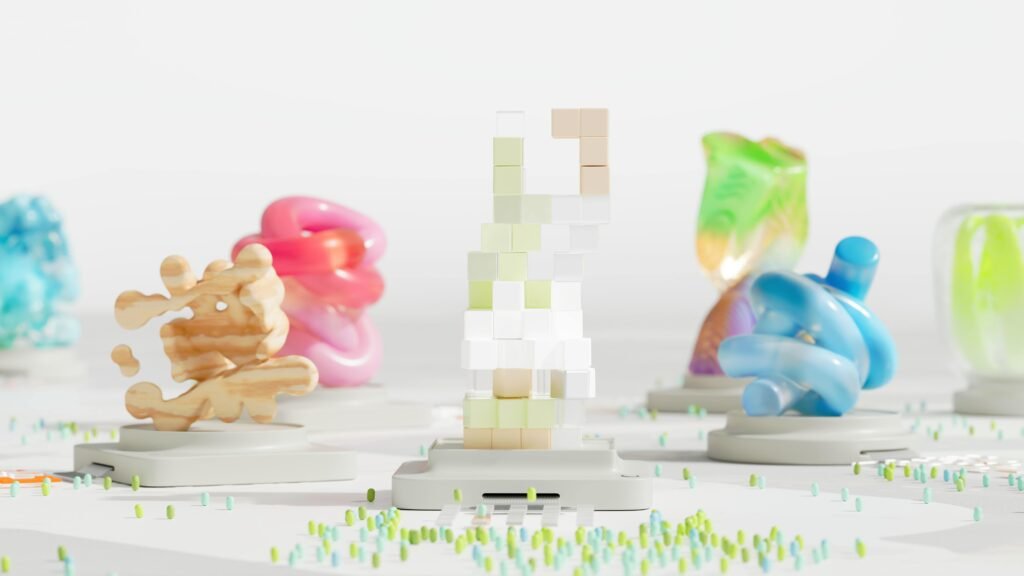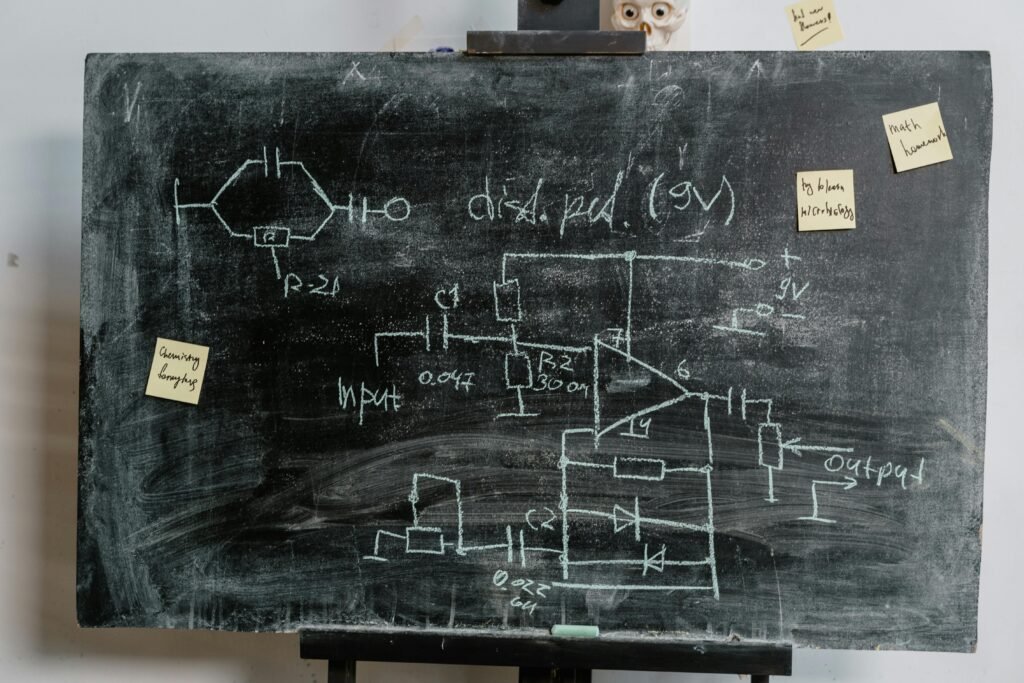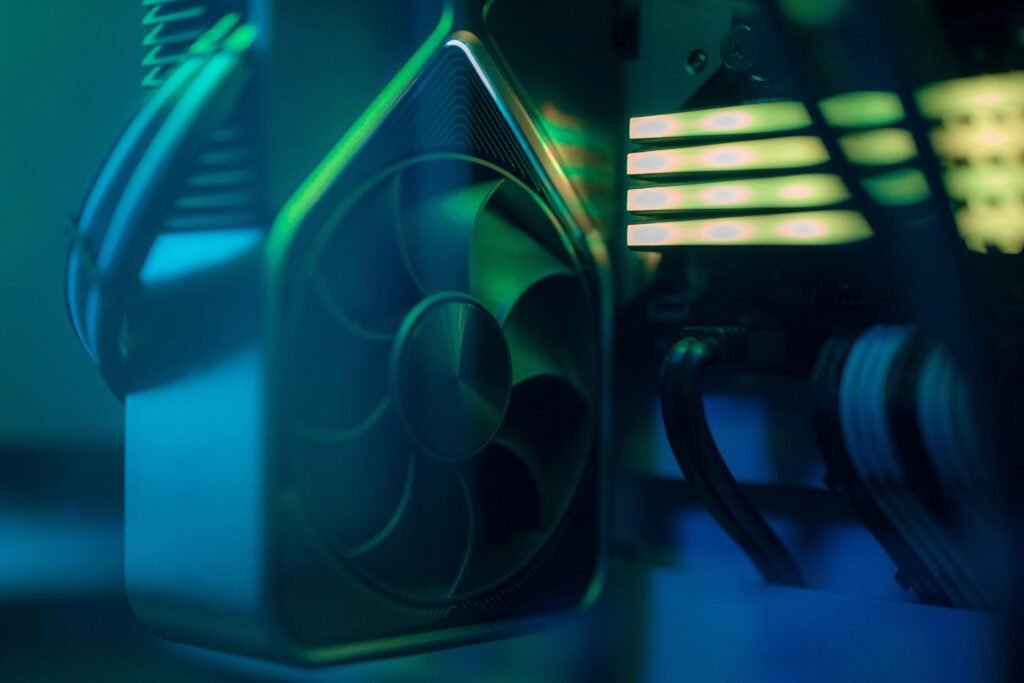
Introduction to Imaginary Machines
Welcome to a universe where the extraordinary intersects with the mechanical, where gears pivot on dreams and levers lift the fabric of the fantastical!
Imagine a place where writing instructions for machines that reside solely in the imagination is a thrilling adventure, a fusion of technical know how and boundless creativity.
This guide embarks on a journey to inspire you to craft manuals that turn the mundane into the magical.
Here, manuals are not just dry instructions but vibrant canvases of imagination.
The alchemy of turning an idea into a fully fledged fictional machine begins with a spark of innovation.
Picture a device that catches fallen stardust to power your nightly dreams or a contraption that transforms whispers into symphonies.
In this whimsical realm, the engineer is an artist, and the storyteller is an inventor.
To start, let’s blend the practical with the fantastical.
Think of your manual as a map guiding explorers through uncharted territories of narrative engineering.
It’s essential to anchor your creative flights with a touch of reality, crafting a balance that captivates and informs.
The trick is to merge clear, concise technical instructions with bursts of imaginative flair.
Detailing the intricate workings of your imagined machine requires an eye for both the mechanical and the miraculous.
Consider describing a component like the “Ethereal Engine,” which harnesses the winds of fantasy to drive its pistons.
Describe how to connect the “Dreamline Tubes” and activate the “Whimsy Generator.”
Each step should be precise yet filled with wonder, creating a seamless dance between reality and fiction.
Visualize your reader not just assembling a machine but stepping into a story.
Infuse your manual with rich, descriptive language that transports them into a realm where anything is possible.
Utilize terminology that evokes curiosity and delight, ensuring every page turns into a new adventure.
Here, the lines between technical manual and storybook blur, offering readers a dual experience of learning and wonder.
Your mission is to create not just a guide but an invitation to a world where imagination and engineering coalesce in perfect harmony.
Conceptualizing Your Machine

Imagine yourself in a realm where the laws of physics gently bend to the will of your creativity.
The first step in creating your guide to fantastical devices begins with an exploration of purpose and possibilities.
What delightful wonders will your machine bring to life?
Maybe it’s a device that captures the laughter of children and converts it into fuel for an eternal carousel.
Or perhaps it’s a gadget that knits dreams into wearable garments, each stitch a memory ready to be revisited.
Start by letting your mind wander through these endless horizons.
Engage in playful brainstorming sessions, jotting down every whimsical idea that flutters into your consciousness.
Picture a machine that harmonizes the colors of the rainbow into a symphony only the heart can hear, or a contraption that spins morning dew into threads of golden light, creating tapestries that shimmer with the dawn.
As you dream up your machine, give it a name that sings with potential; names like “Moonlight Mixer” or “Chuckle Charger” add a layer of enchantment to your creation.
Now, imagine its components.
Does it have a “Starlight Funnel” that gathers twinkles from the night sky, or a “Melody Modulator” that turns bird songs into healing vibrations?
Dive deeper into the machine’s mechanics, blending the whimsical with the plausible.
What powers your device?
Perhaps it runs on the soft hum of bees, or the gentle sway of willows in the wind.
Each element should resonate with a sense of wonder while maintaining an internal logic that readers can follow.
Visualize how your machine interacts with its environment.
Does it float on a cushion of clouds, or nestle snugly among forest ferns, camouflaging its intricate gears with the surrounding foliage?
Each detail, no matter how small, adds to the tapestry of your creation.
With your vision clear, begin to outline the steps and procedures that bring your fantastical invention to life.
Remember, your manual is more than just instructions; it’s an invitation to step into a world where imagination and engineering dance in delightful harmony.
Structuring the Manual

Structuring the manual for your fantastical invention is akin to plotting a grand adventure; every chapter brimming with intrigue and discovery.
Begin with an enticing prologue, whisking readers into your world of narrative design fiction.
Introduce them to the basic lore of your machine, setting the stage for the mechanical marvel they are about to construct.
Next, provide an enchanting parts list, each item a character in its own right.
Imagine a “Twilight Gear” that catches the last light of day or a “Whisper Coil” that hums with secrets.
Detail their origins and unique properties, inviting readers to see these components as vital players in a larger narrative.
Your assembly instructions should read like an epic quest.
Direct readers to gather their “Stardust Sprockets” and “Moonbeam Bolts,” describing the precise steps with a blend of technical know how and poetic flair.
Perhaps they must align the “Aurora Bearings” under the glow of a full moon or synchronize the “Echo Transmitter” with the first bird song of dawn.
Each step should be both a technical challenge and a narrative milestone, blending precision with fantasy.
Operational guidelines can then become a guidebook for the machine’s caretaker, detailing how to operate the “Dream Dial” or adjust the “Harmony Regulator.”
Envision scenarios where users fine-tune the “Glimmer Gauge” to capture just the right amount of wonder or set the “Lullaby Lever” to craft the perfect bedtime serenade.
Let these instructions feel like an invitation to master not just a device but an art form.
Interweave these steps with side notes that hint at the machine’s storied past or future potential.
Maybe the “Radiant Rotor” once powered an ancient city’s lights or the “Celestial Cylinder” is rumored to unlock hidden realms.
These narrative nuggets keep readers engaged, making the manual as much a storybook as a guide.
Every page should captivate and educate, making readers feel like pioneers in a world where imagination and engineering harmonize beautifully.
This unique blend transforms your manual into a treasure trove of inventive storytelling and practical guidance.
Descriptive Language and Terminology

When crafting the lexicon for your imaginary machine, think of each term as a brushstroke in your grand masterpiece.
Instead of mundane labels, create names that sing and sparkle.
Picture a “Whispering Widget,” its gentle hum soothing the air, or a “Luminous Lever,” glowing softly as it transforms dreams into reality.
These names not only describe but also ignite the imagination, painting vivid mental images for your readers.
Delve into sensory-rich descriptions that breathe life into each component.
Imagine the “Stardust Sprocket,” not just as a gear, but as a delicate piece of machinery that glistens with cosmic dust, each rotation whispering secrets of the universe.
Or the “Ethereal Engine,” pulsing with the energy of captured moonbeams, its rhythmic hum a lullaby to the stars.
This fusion of the tangible and the fantastical elevates your manual from mere instructions to a living, breathing story.
Use playful logic to explain how these parts interact.
Describe how the “Melody Modulator” fine tunes the bird songs collected by the “Harmony Harvester,” turning them into symphonies that resonate with healing frequencies.
Or illustrate how the “Glimmer Gauge” measures the exact amount of wonder needed to power the “Dream Dial,” ensuring every user’s experience is perfectly magical.
This intertwining of engineering and storytelling captivates the reader, making the process of assembly a delightful adventure.
Think of each function as a mini narrative.
Explain how the “Aurora Bearings” must be aligned under a twilight sky, capturing the last light of day to activate the “Twilight Transmitter.”
Detail how the “Moonbeam Bolts” need to be synchronized with the phases of the moon, each twist unlocking new layers of possibility.
These whimsical details, while fantastical, offer a structure that feels both grounded and enchanting.
Every term and description should transport your reader to a world where machinery and magic intertwine seamlessly.
This approach not only guides but also immerses them in the enchanting saga of your imaginary machine, turning every page into a portal of discovery and delight.
Visual Elements and Diagrams

Imagine your manual adorned with illustrations that bring your fantastical device to life.
Each sketch should capture the essence of your creation, blending the tangible with the surreal.
Think of a drawing of the “Whisper Coil,” its delicate spirals adorned with tiny luminescent orbs that seem to pulse with untold secrets.
Even if you’re not a master artist, let your imagination guide your pen; abstract shapes and whimsical doodles can convey the magical nature of your invention.
Consider using exaggerated proportions to highlight key features.
A “Twilight Gear” might appear larger than life, its teeth shimmering with the hues of the setting sun.
An “Echo Transmitter” could be depicted with swirling lines that represent its resonant frequencies, wrapping around the page in a mesmerizing dance.
These visual embellishments add depth and wonder, making the technical elements feel alive and dynamic.
Incorporate playful annotations alongside your drawings.
For example, note how the “Stardust Sprocket” must be aligned with the “Luminous Lever” under a moonlit sky.
Include whimsical pointers that guide the reader’s eye through the assembly process, like a series of footprints leading to the next step, or tiny fairies hovering near crucial components, their wings shimmering with light.
These narrative touches enhance the reader’s journey, making each diagram a mini adventure.
Use a mix of detailed schematics and imaginative sketches to provide a comprehensive visual guide.
A blueprint of the “Ethereal Engine” might show the precise arrangement of its parts, while a more whimsical illustration could depict it floating amidst the clouds, powered by beams of moonlight.
This duality of precision and fantasy ensures that your manual is as informative as it is enchanting.
Let your diagrams be portals to the extraordinary, bridging the gap between the practical and the fantastical.
By infusing your visuals with creativity and storytelling, you transform them into more than just instructional aids; they become integral elements of the enchanting tale your manual weaves.
Incorporating Narratives

Imagine your manual as not just a guide but a vibrant chronicle of adventures.
Visualize a day in the life of the “Cloud Churner Operator,” a character whose daily tasks blend technical know-how with enchanting escapades.
The operator’s morning might start with calibrating the “Nimbus Nozzle,” which gently coaxes clouds into shapes that dance across the sky.
As the day unfolds, the operator navigates the challenges of adjusting the “Mist Modulator” to ensure a perfect balance of sunlight and shade, all while documenting their whimsical observations.
Inject narrative techniques to bring your manual to life.
Introduce characters like the “Lullaby Tuner” who fine tunes dreamscapes with the precision of a maestro, ensuring every night’s sleep is a symphony of serenity.
Their journey involves mastering the “Echo Transmitter,” a device that harmonizes nocturnal sounds into lullabies.
Illustrate their struggle with the occasional discordant note, adding tension and triumph to the storyline.
Each section of your manual can be a chapter in this larger tale.
The assembly of the “Aurora Bearings” could be a quest requiring alignment under the twilight sky, where the operator discovers the secret of the bearings’ glow.
Describe their triumph as they synchronize the “Twilight Gear,” a moment of both technical achievement and narrative climax.
Embed plot twists to keep readers engaged.
Perhaps the “Dreamline Tubes” require a rare “Starlight Infusion,” only available during a celestial event.
This element of urgency and discovery transforms a simple assembly step into a gripping subplot.
Each technical detail becomes a narrative clue, guiding readers through both the construction and the unfolding story.
Let each operational guideline be a scene in the grand drama.
Adjusting the “Harmony Regulator” might require tuning into the song of dawn, blending the mechanical and the magical.
By weaving these narratives, you transform your manual into an epic where engineering and imagination coexist beautifully, captivating your readers with every turn of the page.
Examples of Imaginary Machine Manuals

Imagine a manual for the “Eclipse Engine,” a marvel of nocturnal engineering that captures the essence of moonlight to fuel dreams.
Picture opening the guide to find instructions on assembling its “Celestial Cogs,” described as gears that shimmer with the silvery glow of the moon.
The reader is guided through steps like aligning the “Lunar Lenses” to focus beams of moonlight onto the “Dream Dynamo,” an ethereal device that hums with the promise of nightly adventures.
Each turn of the page reveals a delicate balance of technical precision and poetic imagery, transporting the user into a world where machinery and dreams intertwine seamlessly.
Next, delve into the guide for the “Soundwave Synthesizer,” a device that transforms melodies into a kaleidoscope of colors.
The manual begins with a list of whimsical components like the “Harmony Harvester” and the “Melody Modulator,” each part resonating with musical magic.
Readers are invited to fine tune the “Symphony Strings” and calibrate the “Chord Converter,” ensuring that every note produces a burst of vibrant hues.
Detailed illustrations show the “Rainbow Resonator” emitting waves of color, while narrative side notes hint at the machine’s origins in a mythical land where sound and light are one.
Consider the “Aurora Alchemist,” a device designed to capture the colors of the Northern Lights and distill them into elixirs of wonder.
The manual describes how to collect the “Polar Particles” using the “Borealis Basket,” and how to blend them in the “Prismatic Processor” to create potions that sparkle with the magic of the aurora.
Instructions weave through tales of arctic explorers and ancient mystics, making the process of assembly a journey through a frozen, enchanted landscape.
Each page is a testament to the fusion of engineering and enchantment, inviting readers to build a machine that is as wondrous as the Northern Lights themselves.
Conclusion and Final Thoughts

In the mesmerizing dance between fantasy and precision, your journey through the realm of imaginary machines reaches its grand finale.
You’ve navigated the whimsical corridors where gears turn dreams into reality and levers pivot on the axis of the fantastical.
This adventure has been an intricate ballet of engineering prowess and storytelling magic, guiding you to craft manuals that are as enchanting as they are instructive.
As you pen the final strokes of your manual, remember that every line is an invitation to a world brimming with innovation.
Picture your readers not just as builders, but as dream weavers, embarking on an odyssey through your imaginatively constructed blueprints.
Each step, each component described is more than a mere instruction; it’s a narrative gem, a slice of a universe where the mechanical and the miraculous blend seamlessly.
Conclude with a flourish of creativity, perhaps a final tale of the machine’s ultimate triumph or its role in an ongoing saga.
Leave hints of future adventures, suggesting new configurations or undiscovered functions that tease the imagination.
Let your readers close the manual with a sense of wonder and a desire to delve deeper into the realms of their own creativity.
By merging playful logic with a touch of technical brilliance, you’ve crafted a guide that transcends the mundane, inviting others to explore worlds uncharted and dreams yet to be dreamt.
Your manual stands as a testament to the boundless possibilities that arise when engineering meets storytelling, a beacon of innovation and enchantment.
Keep this spirit alive, and continue to let your imagination soar beyond conventional boundaries.
